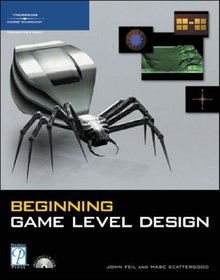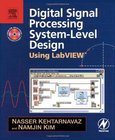Beginning Game Level Design

Book Details:
| Publisher: | Cengage Learning PTR |
| Series: | Course Technology , Beginning |
| Author: | John Fiel |
| Edition: | 1 |
| ISBN-10: | 1592004342 |
| ISBN-13: | 9781592004348 |
| Pages: | 256 |
| Published: | Feb 18 2005 |
| Posted: | Nov 19 2014 |
| Language: | English |
| Book format: | |
| Book size: | 5.47 MB |
Book Description:
"Beginning Game Level Design" is aimed at readers who want to learn about the creation of game environments and the control of game play, known in the game development industry as "level design". It presents an overview of the skills required to produce high quality levels and teaches readers the basic uses of several genre-specific tools along the way. It focuses on key topics, including design aesthetics, familiarization with the basic tools used in level design, what makes "good levels" and how to create them, and explains how readers can transfer these new skills into a job as a level designer. The author takes a step-by-step tutorial approach to teaching the level design techniques genre-by-genre. Offering readers a unique value, this book covers the basics of level design without focusing strongly on one single software platform or product.
Download Link:
Related Books:
Digital Signal Processing System-Level Design
Using LabVIEW
LabVIEW (Laboratory Virtual Instrumentation Engineering Workbench) developed by National Instruments is a graphical programming environment. Its ease of use allows engineers and students to streamline the creation of code visually, leaving time traditionally spent on debugging for true comprehension of DSP. This book is perfect for practicing engineers, as well as hardware and software technical managers who are familiar with DSP and are involved in system-level design. With this text, authors Kehtarnavaz and Kim have also provided a valuable resource for students in conventional engineering courses. The integrated lab exercises create an interactive experience which supports development of the hands-on skills essential for learning to navigate the L...
System Level Design of Reconfigurable Systems-on-Chip
Describes in a consolidated way the results of a three-year research project, during which researchers from leading european industrial companies and research institutes have been working together. Contributors come from academia and industry, such companies as INTRACOM, VTT and Nokia being represented Proposes brand new approaches based on SystemC and OCAPI-XL that explicitly handle issues related to reconfiguration at the system level Introduces a design flow for designing reconfigurable systems-on-chip Provides a comprehensive introduction to reconfigurable hardware and existing reconfigurable technologies Presents examples on how reconfigurable hardware can be exploited for the development of complex systems Provides useful feedback from the appl...
Verification Techniques for System-Level Design
This book will explain how to verify SoC (Systems on Chip) logic designs using "formal and "semiformal verification techniques. The critical issue to be addressed is whether the functionality of the design is the one that the designers intended. Simulation has been used for checking the correctness of SoC designs (as in "functional verification), but many subtle design errors cannot be caught by simulation. Recently, formal verification, giving mathematical proof of the correctness of designs, has been gaining popularity.For higher design productivity, it is essential to debug designs as early as possible, which this book facilitates. This book covers all aspects of high-level formal and semiformal verification techniques for system le...
2007 - 2021 © eBooks-IT.org



